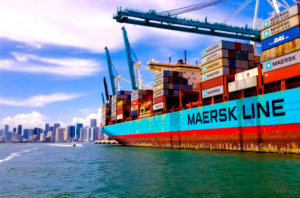
Insurwave is claimed to be world’s first marine insurance blockchain platform launched as a result of a joint venture by Ernst & Young (EY), GuardTime and insurance industry participants. This looks to be a permissioned blockchain platform requiring the member organizations (maritime companies, brokers, insurers, and reinsurers) to be authorized prior to becoming part of the Blockchain consortium.
InsurWave Blockchain Platform is used to?
The blockchain platform is used to achieve some of the following objectives:
- Store data related to assets
- Store data about identities, risk, and exposures
- Associate date to smart contracts
- Connects assets, transactions, and payments
- Integrate this information with insurance contracts.
What’s the technology behind InsurWave?
The following are some of the key aspects of the technology used to create the Insurwave blockchain platform:
- It uses distributed ledger technology (DLT) built on the Corda blockchain – an open-source blockchain project designed with an aim to build inter-operable permissioned blockchain networks.
- It is deployed on the cloud platform, Microsoft Azure.
- It is aimed to manage 1,000 vessels and support over 500,000 digital ledger transactions in the first year.
Why Blockchain for Marine Insurance?
The following are some of the key reasons:
- It helps automate manual processes
- Removes a set of operational inefficiencies
Who are Blockchain Participant or Member Organizations?
The following are some of the companies which have either started using the platform or working to integrate the platform in their application landscape:
- Willis Towers Watson
- XL Catlin – An insurer dealing with global property and casualty insurance and reinsurance
- MS Amlin – An insurer dealing with marine & aviation, property & casualty insurance, and, reinsurance
- Maersk – A container shipping company
References
- Introducing Insurwave, built on the Corda blockchain
- Corda
- World’s first blockchain platform for marine insurance now in commercial use
- Coefficient of Variation in Regression Modelling: Example - November 9, 2025
- Chunking Strategies for RAG with Examples - November 2, 2025
- RAG Pipeline: 6 Steps for Creating Naive RAG App - November 1, 2025
I found it very helpful. However the differences are not too understandable for me